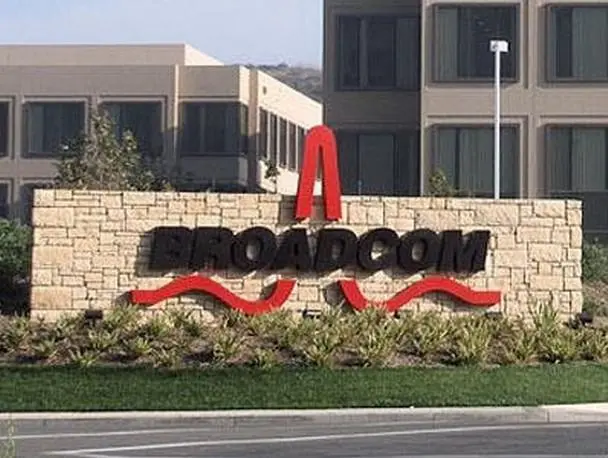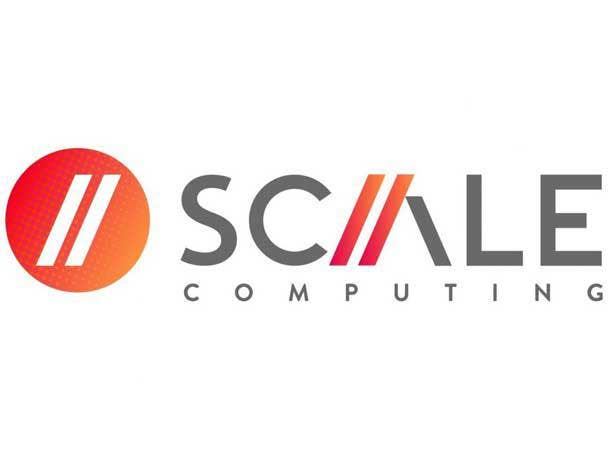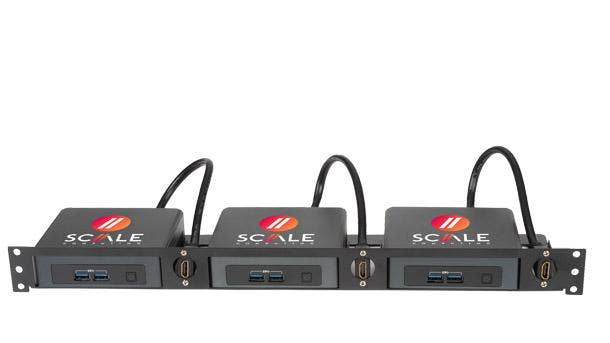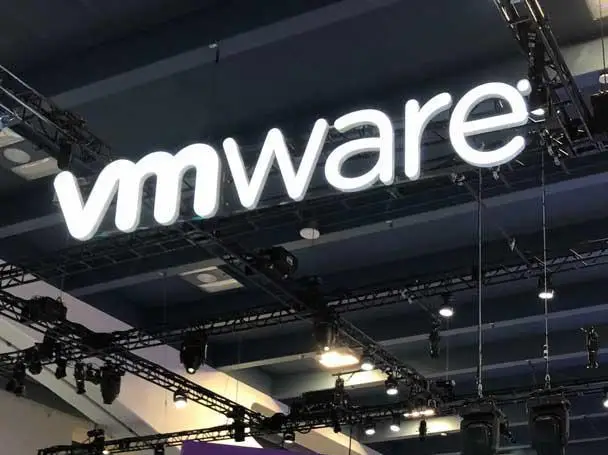Broadcom Price Hikes And Partner Snubs Fueling Scale Computing’s Record Growth, CEO Jeff Ready Says
‘A lot of people thought Broadcom would treat VMware differently, and it turns out no. It was the second week of January when the partner stuff got announced and it was like the floodgates opened. I’m still up at night sending emails like I’m an inside sales guy, just trying to help the team,’ Scale Computing co-founder and CEO Jeff Ready tells CRN.

The headquarters of Indianapolis-based Scale Computing is surrounded by some of the best farmland in the country, so company co-founder and CEO Jeff Ready can talk about fieldwork with some authority.
“[Broadcom engages] in this thing, which private equity groups call ‘profit harvesting,’” he told CRN ahead of the company’s annual show, Platform 2024. “This is something you can only apply to mature businesses, which means they’re not innovating for the future. They’re not trying to see what they can do with the technology. They think virtualization is in a sunset phase. They’re going to milk it. What they’re missing is the opportunity to create the future.”
Scale Computing, meanwhile, is walking in tall cotton, celebrating its best quarter ever and cornucopia for a sales funnel as its largest rival, VMware, has pivoted to higher prices and larger customers in the wake of its acquisition by Broadcom.
[RELATED: Broadcom Suspends VMware Sales One Week To Migrate SAP To Oracle]
Last week amid booming growth, and adding partners at a record clip, Ready hosted Scale Computing’s annual show Platform 2024 in Las Vegas.
“What’s good about Scale is their support keeps marketing’s promise,” said Mark Essayian, president of Scale Computing partner KME Systems, Lake Forest, Calif., who was among those in attendance. “Everyone has good marketing, right? At the end of the day, I have to look at all these marketing campaigns and salespeople, but then when we actually transact business, support understands how the product was sold and they keep that promise.”
Scale Computing has emerged as among the most prominent names partners mention when talking about alternatives with VMware customers.
Forrester Principal Analyst Tracey Woo told CRN that VMware customers are seeking new virtualization vendors for a number of reasons: fear of diminished support and innovation under Broadcom, as well as Broadcom’s track record following the purchase of CA and Symantec.
But the chief driver is that customers have seen sharply higher bills.
Broadcom had vowed to lower VMware prices prior to its takeover of the company, which closed Nov. 22. Since then, it has bundled VMware products, priced them per core, and killed its perpetual licenses.
“To put it simply—yes. We have seen anywhere between 3X to 8X to 10X changes in pricing,” Woo told CRN. “The per-core charging is another way of masking that you are also responsible for paying for a lot of shelfware given their product SKU simplification.”
Self-described “VMware fanboy” and Scale Computing partner Tom Smyth is head of technical solutions at Misco—a U.K.-based solution provider that is now striking up tough conversations daily with customers about the higher cost of their virtualized infrastructure under Broadcom.
“I’d suggest that SME customers are not the beneficiaries of those simplicity gains, however, they are the recipient of the majority of the pain,” he told CRN. “The chaps at Scale and over at Nutanix, they don’t need a marketing plan this year.”
While Misco is “hypervisor-agnostic,” he raves about Scale Computing.
“If I’m honest Scale fits the SMB, SME customer base incredibly well. I love the guys at Scale. They’re an engineering-led firm,” he said. “They might not have the biggest marketing dollars, but from a product perspective it’s bulletproof. The NPS scores tell it themselves. Working with the guys on projects, it’s a dream.”
Broadcom has also stoked ire in the channel by terminating the partner program and taking VMware’s top 2,000 customers direct, wounds that Ready was only too happy to salt during his opening remarks at Scale’s annual event.
While Broadcom is harvesting profits, Ready said he is making hay off Broadcom’s stumbles with partners.
“Thousands and thousands of partners were left in the cold. For those who were reinvited back into the Broadcom program you saw thousands of customers stolen—effectively ‘taken direct’ by Broadcom,” Ready told attendees at the event. “Even the words they use—‘We’re going to take the strategic accounts direct.’ I’m using the word ‘stolen’ because I know this is a partnership. We don’t steal customers. We are jointly working customers.”
Ready said the company’s pipeline of new customers for its first quarter was up 80 percent sequentially from the end of the year, while year-to-year sales are up 35 percent. Ready said Scale Computing is on track to break 50 percent growth this year.
Scale Computing also has brought in new faces to help.
Longtime Scale Computing board member and investor Don Aquilano is taking on the role of chief administrative officer. Aquilano previously held roles at HP and the Boston Consulting Group. He has worked with Scale Computing since 2009.
In March the company hired Steve Loper as vice president of engineering. Loper has more than 30 years in software development and consulting and is a Microsoft MVP.
Here is more from CRN’s interview with Ready.

Jeff, we have been talking about Broadcom for two years now. You called this back in 2020. You said, ‘As goes Symantec, so goes VMware.’ Seems like you were on to something.
They have a playbook.
In my opening remarks I call out what they call ‘profit harvesting.’ They engage in this thing which private equity groups call ‘profit harvesting,’ which doesn’t sound like you want to be on the wrong end of that.
To me it’s clear—if Broadcom could get rid of the channel, it would.
They blew up most of it already. Then they had customers which Broadcom declared were their own and were taken direct. Maybe you are technically in the program, but all your customers just got stolen. I know it’s more than 2,000. I had one partner tell me they had more than 2,000 customers taken from them. One of the big VMRs [VMware resellers].
They’re doing their thing as predicted. They had to get through regulatory approval so they said all the right things. Just last month, [Broadcom CEO] Hock [Tan] said,‘Everything is going to plan, which is very, very well.”
I’m just like, ‘Read the room, man.’
Why are these new customers and partners coming to Scale? What are they telling you?
Most customers I talk to are seeing radical price increases. Even with all the positioning from Broadcom that has been, ‘We’re cutting prices.’
At the low end, all of the cheap versions and free versions of VMware, those all got discontinued. That’s gone. Even if you were using a product that they kept, well now you have to buy the bundle. And the bundle is a lot more.
There was a children’s hospital in Europe. As the partner relayed it to me, he said, ‘This is burned into my mind. They asked the Broadcom rep if they—they’re a nonprofit hospital, they didn’t budget for this—can they get some kind of transition plan or payment plan? The answer they got was, ‘I’m sorry. VMware is not for everybody.’
Broadcom’s entire strategy is based on their top customers, a small nonprofit is completely outside their zone of interest.
What I’ve been telling customers is, ‘I bet you are seeing a 2, 3, 4X increase,’ and they’re all like, it’s more than that. It’s 5X, it’s 8X, it’s 10X, depending on where you fit. I suspect it’s worse in the midmarket. I saw one where a $2 million renewal went to a $10 million renewal.
It’s across the board.

The strategy is working, though, right? Broadcom is doing better than it ever has been.
The strategy does work from a financial standpoint. The company’s strategy. But they are not technologists. The reason I got into tech was not to seek profit harvesting. It was so you could create something. You could solve problems. And you could solve problems for other people and 100 percent, that is what VMware started out as.
I knew people who were early at VMware and they’re good people who are doing cool stuff. That’s why I got into tech. That’s why I think most people get into tech. You are creating the future. But that’s not what they’re doing. I mean they happened to buy a tech company, but if they bought a company that made gravel, I suspect they would follow the exact same playbook.
That’s how they think about this world.
What are they missing? What is the big picture that Broadcom is not seeing?
It depends on your long-term strategy. This profit harvesting thing. This is something you apply to mature businesses. Which means they’re not innovating for the future. They’re not trying to see what they can do with the technology. They think virtualization is in a sunset phase. They’re going to milk it.
What they’re missing is the opportunity to create the future. We continue to pour money into R&D. We’re coming out with new stuff all the time. We’re unveiling new stuff this week. If we weren’t doing that. I wouldn’t be interested in the job I have.
That’s why I got into tech.
People hear R&D and they think white coats and labs, not everything is experimentation with lasers. Some of it is customer support and building customer features?
What they’re talking about is—they’ve got their 2,000 customers and they’re going to focus on them.
When I was in engineering school, I had a professor who talked about two kinds of innovation: incremental innovation, which is what you described, we have this, we just have to make it a little better, versus radical innovation, which is create something new.
The radical innovation isn’t what they’re talking about. They are talking about, ‘Hey, what can we do to, I don’t know, futher integrate Symantec with CA and some VMware product inside our top 50 customers because it will be even stickier and they can never switch?’

Would you say Scale is not for everybody?
The way I look at it, I want my products to be used by as many people as possible. That’s part of the motivation. That’s why we at Scale have embraced not just the enterprise, but the midmarket, and we have talked about the midmarket because I think those customers are cool.
VMware was like that. VMware was completely like that. But so it goes. It’s different now. As a result, we have just seen a massive increase in demand.
Talk about that, how big is this opportunity?
I was seeing like 200 [percent] and 300 percent year-over-year increases in leads. Top of the funnel. But the middle of the funnel, new creation was up 80 percent quarter to quarter. That’s top of funnel turning into meaningful business activity. Our sales cycles are five months so most of that coming in is going to close in Q2 or Q3 and into next year, and it’s not showing any signs of slowing down.
How is it managing that pipeline?
We have added three times as many new partners in Q1 this year as we did last year in the same quarter. They were higher last year, but not like this.
We’ve had some benefit ever since the deal was announced, but I never could have imagined this—the shift that happened once it actually closed and all the changes came down. A lot of people thought Broadcom would treat VMware differently, and it turns out no.
It was the second week of January when the partner stuff got announced and it was like the floodgates opened. I’m still up at night sending emails like I’m an inside sales guy, just trying to help the team. We’re hiring people, we’re catching back up. These are good problems to have for sure.

What are some of the reasons folks are engaging with Scale?
Well, it’s not just pricing. When it comes to adding new partners, a lot of partners just got booted and had their customers taken. I’ve had customers come to me and say they were Symantec customers in the past, and they weren’t going to let that happen to them again.
Having seen so many companies try to be direct and channel at the same time, there’s so much conflict. I imagine they’ll just throw in the towel at some point.
Some customers don’t have a renewal for a while but are thinking, ‘Let’s take a look at what other options there are.’ We are bringing them into a new future of infrastructure. We are taking them into a new way of doing things.
What are some of the incentives that Scale has now to win more of those deals?
One thing that we’re doing, it’s our rip and replace program, which maybe sounds aggressive, but it is.
For partners who bring over a VMware customer, they get additional margins. They get additional discount on that deal. They get tools that normally we would charge for. Tools to actually perform the migrations from the VMware environment to ours.
The reason why we do that especially for new partners—a new partner is unfamiliar with Scale, so they have to make an investment. They have to learn our product. How we do business. They have to learn how to register deals, marketing for their customers, all this stuff.
It’s simple. It’s not some crazy back-end rebate in it. We combine that with a program we put together for end customers called ‘seamless switch,’ which, if a customer has some time left on their VMware contract, we will just give them credit for that time for free with Scale.
Does that include the new pricing on VMware or the old pricing on VMware?
Well, it’s based on whatever they’ve got today. It’s based on time really, so if they have six months, it is six months regardless of what the rate was.
I think sometimes this gets missed because we’re in the channel and we talk tech stuff and everything, but on the other end, somewhere there is a customer, a CIO or director of IT, who two years ago signed a contract, sees all this stuff happening and now has to go to his CFO or his president, and say, ‘Hey, we need to make a switch.’
Well, you can make the switch without losing money. These two things are meant to be symbiotic. So the partner can take that out to the customer and that IT buyer can save face with the rest of the company.
The idea is to make sure partners have the margin to learn the business with us, and help customers make the switch, without breaking the bank.

Analysts, VMware partners, what they all say is that it is too difficult to move off VMware and into new infrastructure, and that pain or fear of switching is benefiting Broadcom. But, if that was true, Scale, Nutanix, wouldn’t see this spike in customers, correct? In other words, people are deciding it’s worth it. Is that right?
One hundred percent that’s true. And it’s not just small customers. I’ve had Fortune 500 customers switching to Scale. I’m sure Nutanix is seeing the same thing. It’s customers of all shapes and sizes.
Certainly there are customers who think, ‘It’s going to be too much of a pain’ and they’re just going to stick with it. And that’s Broadcom’s entire bet. That’s the strategy.
They can raise the prices 5X. If they keep half the customers, we come out ahead.
How easy have you made it to switch?
I think we’ve made it really easy. We have about three different ways customers can migrate their applications over to us and we just added a fourth. That seems like a lot, but different environments call for different things.
Some of those tools are built right into the product, literally just drag and drop your VMware VM into Scale and it will just convert. That works for a lot of customers.
But some customers, they’re 24x7 operations, they can’t have downtime. If you are running a 911 system, you can’t have it down for 45 minutes, so tools that allow it to happen with minimal or no downtime. They’re basically set up so Scale becomes your disaster recovery target for VMware. And once it’s synced up you just fail over to Scale without ever failing back.
So these kinds of tools make it very easy. It is IT, so everyone has a corner case. Someone has 100 VMs, there’s always one that’s going to give you a little bit of grief.
The new tool we just provided, it’s really meant for large environments.
Dragging and dropping certainly sounds easy and it is easy if you’ve got 10, 20, 50 VMs, but when you have 5,000 VMs, that’s a big one. You can do the setup in about an hour. You set up this migration server and then say ,‘OK,’ and let it rip. And it will start doing everything on its own. It takes a little it of time mechanically, but person-time, it’s very straightforward.
But we’ve got tools for the little guy, the middle guy, the big guy, the 911 operator. We’ve got everybody covered. We try to make the cash part of it easy with the seamless switch programs, we have the tools to do the migrations, but we also added a service to do migrations as well.
Partners can be trained on how to do this themselves and they can make money with that, or partners can just sell the service and my team does it. We don’t care which way it goes, right, the point being, the customer may not be big enough, or technical enough, to spend the time.
We move thousands of VMs every week so they can contract with us and we can white-glove the whole thing for them.
I’m sure it depends on the customer, but how long does it take to move an environment?
If you have applications running on VMware and you want to run them on Scale, you can do that in one day. You’ll have something up and running in 25 minutes.
The question is, ‘OK, what about the rest of that ecosystem? What about all the tools or everything that you were using that were dependent on VMware?’ In a typical environment you have backup and firewall and these types of things.
In a big environment, you are planning, it’s certainly a multimonth thing. The beauty is, what most of our customers do, is you can run both systems completely in parallel. What a lot of customers do is they move 50, 100 or 200 VMs that first day. Let it go. And over time move the rest. Others do it lock, stock and barrel.
The important thing is this migration planning, VMware off ramp is a huge off ramp for the channel. I’ve seen partners building an entire practice around, ‘Hey, we’re shifting gears— we are the VMware replacement shop.’